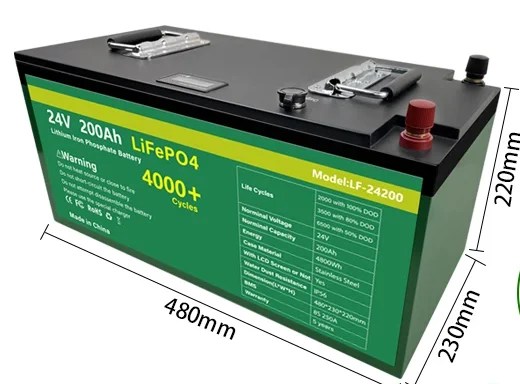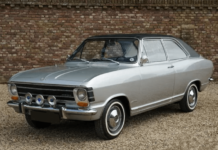[ad_1]
I thought I would save a few dollars on getting a 5kWh LifePo4 battery for my wife’s off grid home. Little did I know that this decision would cost me over a hundred hours of my time and take almost a year to get working properly. This article is a tale of my woes that stretched over the better part of a year and how I finally got the battery to work properly after replacing the BMS and one of the damaged cells. This story is not for the meek of heart so here we go.

It all started with Aliexpress
Aliexpress is owned by the same folks as Alibaba with the one big difference is that it looks a lot more like ebay and it is designed for people who just want to buy a couple of a particular thing instead of a couple of thousand of a particular thing. I got online and started shopping, I didn’t want the cheapest battery, but I also didn’t want the most expensive. I settled on a 24v 5kWh LifePO4 battery with a claimed charge/discharge rate of 250 amps. I have enough experience with chinese companies to know that a claimed charge/discharge rate of 250 amps really means a charge/discharge rate of 100 amps, but all I needed for our solar system was 80 so that was fine. The battery was about $1400 shipped so I paid the money with paypal and then the battery shipped. Because I bought this at the time of the shipping crisis it took well over 6 months to get here. I notified the sellers and they would send me a shipping manifest in chinese which I fed into google translate so I could follow my battery across the sea.

The battery arrives, but is smashed from shipping
I got the battery which showed 22v of voltage but would not charge or discharge. There was small plastic pieces in the box, there was no arrow showing what side was supposed to be up on the outside of the box and the 80lb battery had clearly been shipped upside down. They told me to take the battery apart to check the inside, but the top was glued on. There were handles on the top so I hung the battery from the handles and then heated up the glue around the rim of the box and used a screwdriver to open up the steel battery box and cutting my finger pretty badly in the process. Once the box was apart I could see what had happened. The battery was shipped upside down and one of the spot welded aluminum pieces on the first cell had broken off. That is why it was showing voltage (it was touching the battery) but why I could not charge or discharge because the connection was not good enough to pass any real amperage through.

There was a bigger problem with this battery construction. The positive battery terminal was installed flush against the metal case top. There was supposed to be a plastic bushing to keep the lug from touching the case but there was none. I looked in the box thinking maybe it had broken, but no it just was not installed. Then I saw that the plastic piece had been installed on the other side of the lug leaving the powered lug up against the metal of the case. It had shorted out a bunch of times while being shipped (there was a lot of soot from the arcing) and I’m sure the BMS just kept cutting out preventing a fire from starting. When I looked at the construction it seems like they installed that lug higher because it didn’t clear the aluminum welded busbars (they were up too high). Is it any wonder why planes carrying lithium batteries from China burst into flames on a pretty regular basis?

Retapping the damaged cell
I did some research on tapping the LifePo4 cell to reattach the aluminum bus bar. it seemed like the trick was to not allow the drill to go too deep. I bought some Metric taps online and then set about to do the deed. It was relatively easy and I managed to get the busbar that had broken off reconnected properly. The key is to not over-tighten the bolt that holds the busbar down otherwise you end up stripping out your tap. The next problem I had was the cell that had the broken busbar did not want to charge at the same rate as the others. I thought maybe if I bought a lab charger and just charged that cell individually I could get them all to be about the same level. Unfortudently, it never worked out that way, the cell was slightly dented and it just couldn’t keep up with the other cells on the battery. This could have been due to a damaged BMS but was more likely to just be a damaged cell. I decided to replace both the cell and the BMS just to be safe.

I bought a LifePO4 BMS from overkill solar which claims 100Amps continuous charge/discharge for about $130. My take on this BMS is that it seems to actually be able to do what it says (in the BMS settings it actually says it can do 120 Amps). It comes with a Bluetooth module that allows you to monitor the battery in realtime. This BMS was the best investment I have ever made and if you have Lithium batteries that you use with a solar system that are stored inside you should not skimp on the BMS. Replacing the BMS was relatively straightforward, and programming it with bluetooth was a snap.

The next issue was getting a replacement LifePO4 cell. I had to measure the existing cell dimensions and get a matching cell online. I opted to get a cell with a welded studs on it because I trust that more than the crappy aluminum tapping I had done on the other battery. After looking for a long time I managed to get one that looked decent from Aliexpress for about $140. I ordered it and it came in about a month later. I installed the new cell without too many issues other than the stud on the top added a couple of mm to the height so I had to carefully bend the aluminum busbar then drill it out so the stud could fit through it. Once it was together and the battery was duct taped together I put it on a test charge cycle. It seemed to do really well, I wasn’t interested in waiting for the cell balancing to bring the cells to the same voltage so I used the variable voltage lab power supply to get the voltages of all the cells with .02 volts of each other. After about 100 hours of labor and a lot of blood sweat and tears I finally had a battery that worked.

Moral of the story?
Don’t buy lithium batteries from China. Even if this battery had not been damaged in shipping, because the positive terminal was touching the metal case, this battery was literally a death trap and fire hazard. It is clear to me that whoever assembled this battery knew absolutely nothing about electricity or they never would have made such an obvious mistake. If I had to buy a LifePO4battery today, I would just get an EG4 server rack battery from Signature solar. The price is about the same and the quality is probably 1000 times better. Lesson learned.
Ride On.

[ad_2]
Source link











